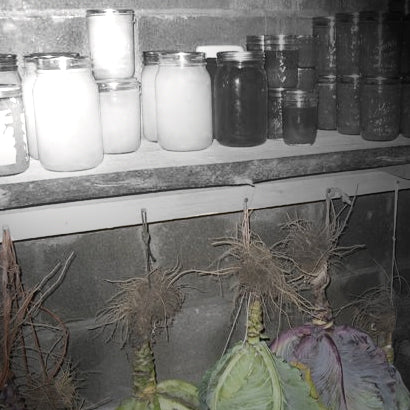
New research recently came out confirming what many of us already suspected with milk kefir grains. That cooler temperatures help grains grow and also create greater microbial diversity.
Milk kefir grains are simply happier in colder temperatures. Given the history of milk kefir, its not surprising.
Most research and references point to the kefir grains originating from North Ossetia (the northern Caucasus mountains). Temperature in those high lands rarely go above 75°f even in the heat of the summer. The grains were set out in the sun in leather bags / sacks to ferment for a day. Even with the sun, it was likely a pretty cold ferment most of the time. Our own experience is also that milk kefir does really well at low room temperatures, but really suffers when it starts to go above 80 degrees. Water kefir, ginger beer plant and kombucha have different origins and seem to do better with warmer ferments.
Details of the study
The study tested 3 temperatures (about 76, 85 and 95 F) or (24 , 30 and 35 C) By far the best temperature was the lowest one - (76°f / 24°c). The grains grew significantly better than the other two and the microorganisms were more diverse. The 85° and the 95° were similar with the 95° being only slightly worse than the 85° and slightly less diverse. So it seems that temperatures around 80° and above are simply not good for the grains.
Interesting parts of the study:
Yeast is important for growth
Yeast tends to increase slowly with temperature up to about 76°, but after that it starts to die out faster than the bacteria. It’s likely the reason why the ferments suffer so much at 85° and higher. A healthy balance of yeast is needed for a strong healthy ferment.
Lactobacillus loves the heat
Lactobacillus is one class of bacteria that is well studied with many health benefits. According the the study, it increases with higher temperature; whereas the other strains and yeasts start to die off. At 95°, the diversity is so low, that’s its basically only lactobacillus left standing. As good as lactobacillus may be for us, I would personally take a balanced diversity of microorganisms any day.
Great growth means more kefiran
Kefiran is the gooey stringy part of the grains. You know you have healthy, happy grains when its extra gooey and stringy. According to the study, lower temperatures makes more kefiran. Kefiran by itself has health benefits that's separate from the other strains and yeasts in kefir.
Bottom line
If you want healthy grains that grow and make a kefir that is diverse in microorganisms, then ferment at 76° or lower. Higher room temperature ferments will create a ferment rich in lactobacillus, but it will lack other healthy strains and yeasts. It will also slow the growth of the grains.


Comments
Leda
I purchased dried milk kefir grains and reconstituted them per instructions(sorry from another site). They seemed to work fine but the grains weren’t growing and actually seemed to be diminished each time they were strained. I started letting the new milk sit on the counter for an hour or 2 to warm up a little before adding the grains and now the grains seem to have started growing a little. I haven’t seen any reference to using cold milk right out of the fridge or allowing to warm a little in any article I’ve read. Would you comment, please?
Also, I’m not fond of the taste and have to flavor it. Would purchasing grains from a different source taste different?
Thanks!
August 01, 2019
Leave a comment